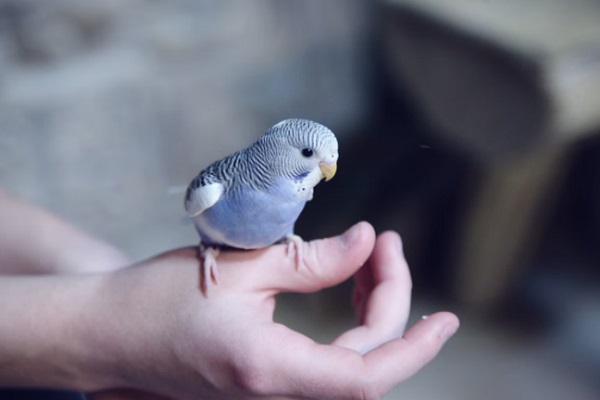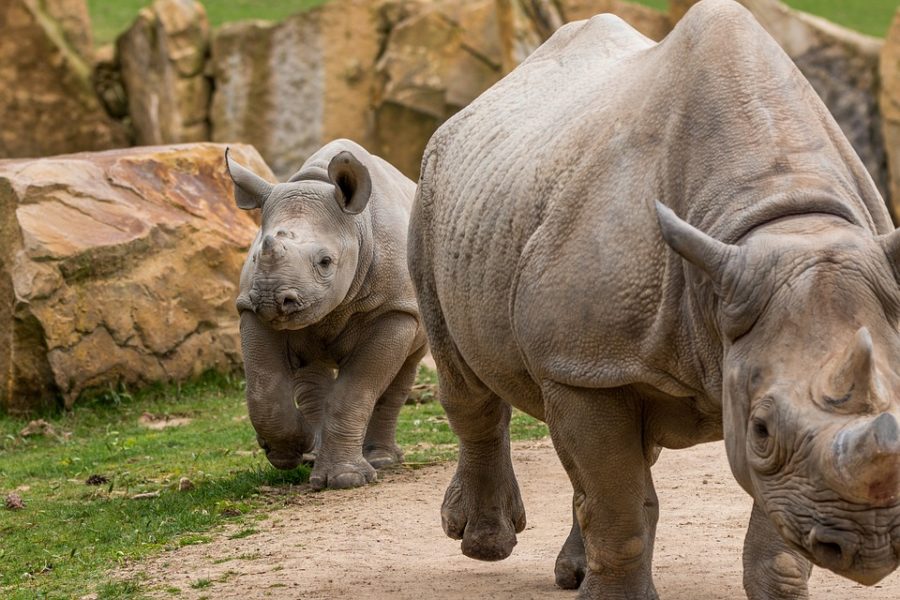Cats are considered the best antidepressant. Communication with them calms and pacifies. In Egypt, this animal was considered sacred. These beautiful creatures remain the most popular pets among people. Such fluffy creatures are always adored by children and women, but the stronger sex is also sometimes drawn to them. They are smart, affectionate and easy to care for. For busy people, it is convenient that they do not need to be walked. Well, as in other details of our lives, there are pet owners who prefer specific breeds of cats in the house. Some breeds of cats can surprise with their price. But what can you not do for these beautiful eyes and unrivaled aura of warmth, tenderness and comfort.
1. Norwegian Forest Cat. Price $600
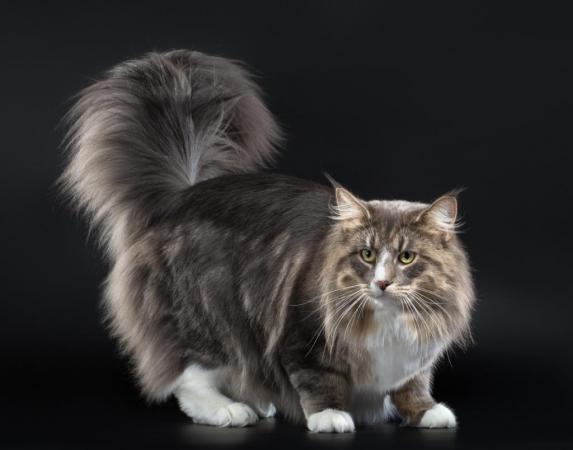
The Norwegian Forest cat is a fluffy beauty of considerable size - it is larger in size than such breeds as the Pixie-Bob and the Somali cat, but almost half the size of the Maine Coon.
In appearance, these cats are distinguished by their impressive dimensions. The male of this breed can weigh 7-9 kg, the female - a little less. The body of the pet is long, strong and quite flexible. It has a massive build, while the front legs are much shorter than the back. There are tufts of hair between the toes. The animal stands out among other breeds by the presence of wide feet, as well as heavy limbs. The main distinguishing feature of cats of this breed is a long, fluffy, beautifully lowered tail. Its length can coincide with the length of the body. The pet's head has the shape of a regular triangle. The profile is straight and long, and the chin is strong. The muzzle attracts attention with a wide elongated nose, developed cheekbones. If you look closely at the ears, you can notice how high they are set on the head, have a pointed shape, including being endowed with long, drooping tassels from the inside. In addition, the ears of the animal are large and wide at the base. The animal's whiskers are also long, sticking out in different directions. Large, wide-set eyes can come in a wide variety of shades.
Norwegian cats are very popular in northern European countries. Thanks to their thick and moderately long fur, this breed is able to survive in adverse climatic conditions. It can withstand cold, wind, snow, and any bad weather. Today, the Norwegian forest cat, like many years ago, has a lot of energy, loves to run, climb, and is considered a good mouser. It is distinguished by its endurance and incredible patience.
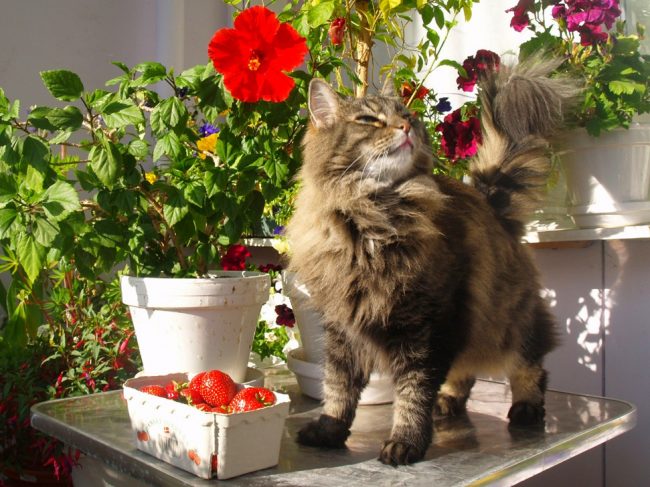
There is more than one story about the origin of these cats. According to one of the more reliable versions, representatives of the Angora breed were first brought to Norway. This happened in the 16th century. The furry animals gradually adapted to the harsh climatic conditions. They ran, climbed trees, and also caught fish, so they had well-developed tenacious claws. Scientists also suggest that this breed could have appeared as a result of the Angora mutation of a wild cat brought by Vikings from Scotland to Norway. If you carefully examine ancient engravings of the goddess Freya, you can find a general similarity between the depicted animals and representatives of the Norwegian forest breed.
During the Second World War, the Norwegian Forest Cat was on the verge of extinction. The breed survived thanks to the efforts of the Norwegian Forest Cat Club. To prevent extinction, a number of rules were adopted for breeding the Norwegian Forest Cat breed. Thus, before breeding, each breeder had to show his cats to a special committee and, if they met the Norwegian breed, they were registered and given permission not to breed. Gradually, the breed resumed its quantitative population, but only after 1977, Norwegian Forest Cats were officially allowed to participate in all European exhibitions.
If you are planning to get this particular cat, you should know that it has some health problems. This particular breed is prone to kidney and heart disease. If you are buying a kitten just for fun, you can consider any young Norwegian, for example, the one that first ran towards you. When participation in exhibitions is supposed, the approach should be slightly changed. Inquire about the pedigree of the baby and take a close look at its mother. This will allow you to have an idea of the future exterior of the animal. Although it is worth making an allowance for the fact that the mother cat was pregnant and is now nursing, so her fur may not look very good.
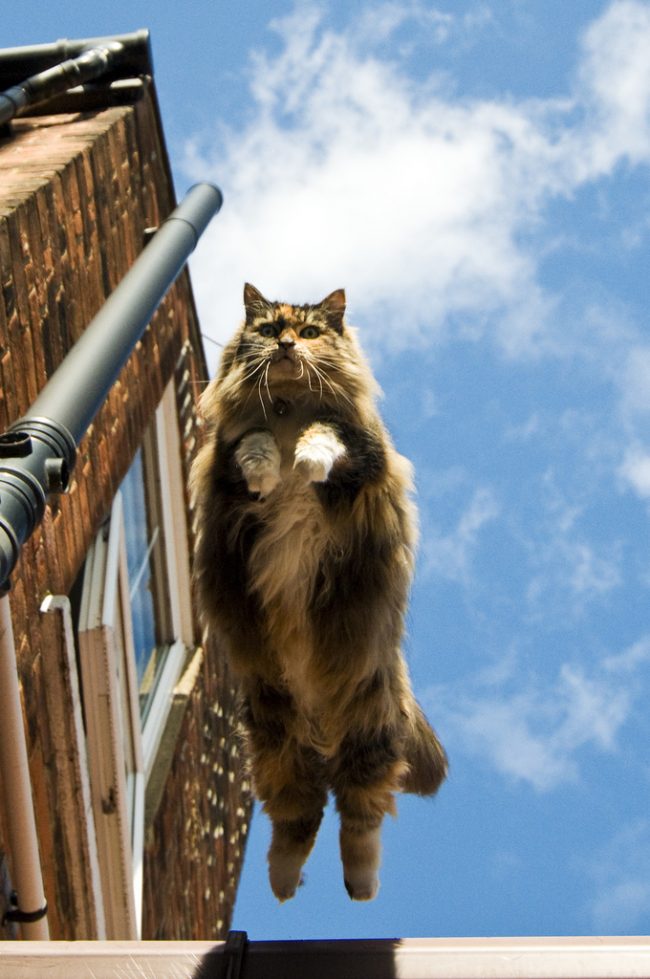
Despite their large size and strong body, Norwegian Forest Cats have a gentle character and good manners. They are loving and patient, even towards naughty children and unobtrusive other animals. These cats often become attached to people, but they will not rush to be picked up: Norwegian cats are happiest when they lie next to their owner, not on his lap. Also, representatives of this breed do not like any "cuddling", but they love when their fur is stroked and scratched.
2. Egyptian Mau. Price 3000 euros

Next on the list of expensive cat breeds is the Egyptian Mau. The price policy for a kitten of this little girl is kept within 1000 euros, for an adult cat they ask for at least 3000 euros. The Egyptian Mau is famous for its natural spots. Another breed that has this characteristic is the Bahrain Dilmun cat. The uniqueness of the Egyptian Mau is that the spots appear only on the tips of the fur. The breed arose in 1952.
Nowadays, Egyptian Mau is a closed breed. In Europe, three catteries of these cats were opened in 1988 in the Netherlands, Switzerland and Italy. Today, there are few catteries of Egyptian Mau in Europe. Almost all of them are of related origin. In Europe, there are difficulties with expanding the population of these cats in catteries and opening new ones. It is not easy to acquire new animals for breeding. In the USA, there are more catteries, but it is difficult to deliver cats from there.
In Egypt, cats (Mau in ancient Egyptian means cat) were treated with special respect, worshiped, and even mummified and buried with honors in gold and silver sarcophagi. This is not surprising, because one of the goddesses of ancient Egyptian mythology, the goddess of joy and fertility, Bastet, was depicted with a cat's head. And the cat was considered a sacred animal under the patronage of Bastet. On the other hand, according to genetic testing, it had North American and European origins. It is also believed that the Egyptian Mau is one of the ancestors of the modern domestic cat. There are some noticeable differences in the physical characteristics of the Egyptian Mau and other cats. Among the most noticeable are the shorter front legs. The Egyptian Mau is a real champion runner among cats. There is no other breed that could reach speeds of up to 58 km / h.
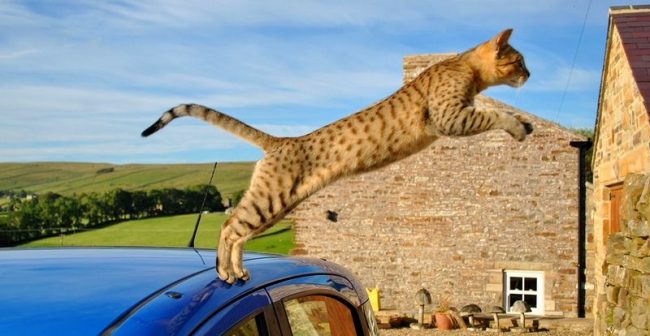
Cats of this breed are among the most devoted pets among their kind. When living with a family, the Egyptian Mau will usually bond with only one or two family members. For these people, the cat will remain a loving and devoted companion for life. It will play with them the most, and will also spend time with them the most.
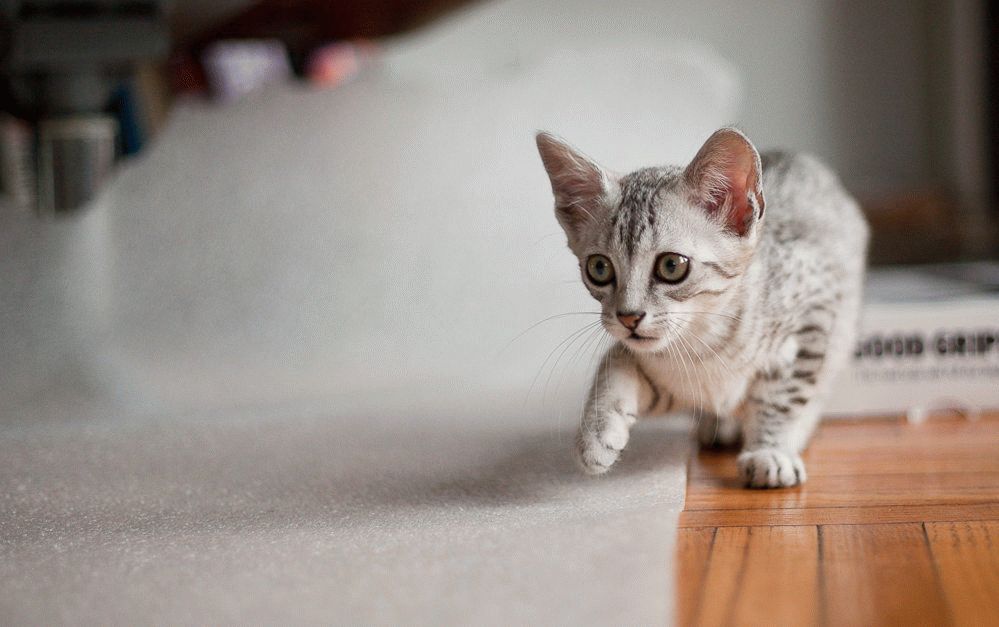
The owners of these cats note their pleasant voice and ability to "talk about life". They catch the intonations of the owners and quite appropriately respond to them. In the house, they prefer to occupy elevated places and from there watch the strange bipeds. Most Mau love water and if from a young age they are accustomed to water procedures, then in adulthood, bathing will bring only pleasant emotions to both the owner and the pet. Mau are good hunters (this is genetic) and especially love games associated with catching toys. By the way, Mau reverently guards its favorite toys and can even growl when someone tries to take them away from it. In general, the breed is balanced in character and intellectual in development.
3. British Shorthair. Price $1500
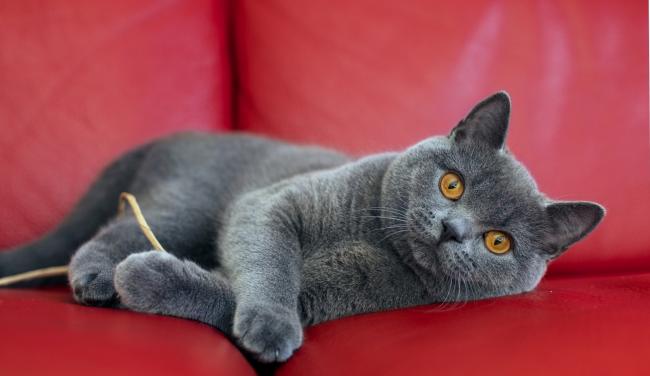
The price of a British Shorthair cat ranges from $$500 to $$1500, depending on where you decide to buy it. Known for its stocky body and wide face, the British Shorthair is popular among cat lovers despite its high price. The breed is also popular because it was used as the inspiration for John Tennell's illustrations for Alice in Wonderland.
The origin of the British Shorthair is rooted in the domestic cats of Rome and Egypt. They came to Britain with the help of Roman legionaries when Rome established control over the islands. In Ancient Rome and Egypt, cats were indispensable companions of man. Ancient Roman historical chronicles contain information about powerful cats with gray fur, large round eyes and sharp fangs. It can be assumed that they were the ancestors of modern Britons. So shorthaired cats settled on the British Isles, where they began to crossbreed with local forest cats. The animals quickly became loved by the British for their exquisite appearance and truly aristocratic character. The cats had good health, endurance and excellent hunting qualities.

They became seriously interested only at the end of the century before last, when the English wanted to create their own breed. At that time, breeders crossed ordinary English street cats with handsome Persians. As a result of long work, these delightful, strong creatures with unusual fur were born, which is so pleasant to cuddle, and it is impossible not to stroke.
British Shorthairs need to be gently trained from puppyhood, otherwise, as adults, they will compete with you for the place of the head of the house. “I can’t take this toy? Really?! And if so?” “You don’t want to tear off my door at four in the morning? What if I pull off this piece of wallpaper with my claws?” “No, master, I won’t have fish today. I’ll have pate. Otherwise, I’ll go on a hunger strike!”
In 2015, the British cat named Merlin won. He competed in the nomination "Who purrs louder". It was established that Merlin's purr-r-r-r-r reaches 67.8 decibels! When Merlin is happy and starts his cat song, his owner cannot talk on the phone, the affectionate kitty drowns out the sound of the washing machine! It is curious that during the measurements, the maximum number of purring decibels was recorded when Merlin was offered food with tuna!
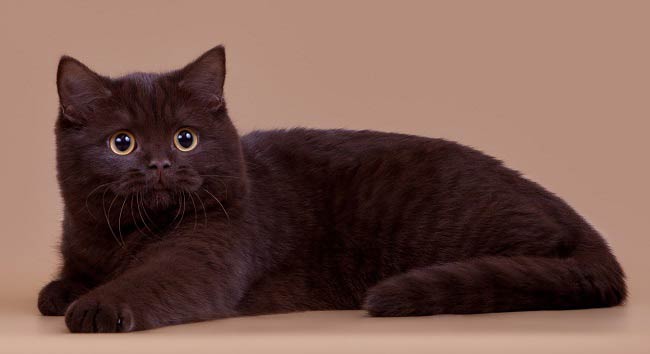
British Shorthair cats are quite calm animals with a well-developed sense of self-worth. Intelligent by nature, they have high intelligence and are clean. Not as active and playful as representatives of other breeds, but infinitely affectionate, good-natured and devoted to their owners. They are distinguished by truly British restraint and aristocracy, as well as special independence. It is the latter feature that has made them a favorite breed of busy people. They are even called "cats for a businessman", since British women easily endure loneliness, and during the absence of the owner, they successfully occupy themselves with various games. At the same time, they adore all their household members and look forward to their arrival to say hello, play or just sit nearby. British Shorthairs are devoted and loving creatures, in return demanding the same from their owners. The more love and energy is invested in the relationship with the pet, the stronger their bond will be. British cats, as a rule, become attached to absolutely all members of the family, not choosing one owner, like many cats.
4. Scottish Fold. Price $450

The Scottish Fold is a breed known for a deformity in the cartilage that causes the ear to be "folded". It has been described as looking like an "owl". The original Scottish Fold was a white barn cat with a mutation in her ear. After producing kittens with the same folded ears, she was registered as a new breed. It is believed that the Scottish Fold's folded ears are the result of a mutation. To maintain this trait, a straight-eared cat must be mated with a folded-eared animal.
The fur can be either medium or long. It is very dense, has a uniform "plush" structure. The cat should have clearly visible "pants" and fur between the toes. The "cotton wool" quality of the fur is a disqualifying feature. Chocolate color, as well as lavender, point or combinations of these colors with white are an unacceptable sign of crossing.
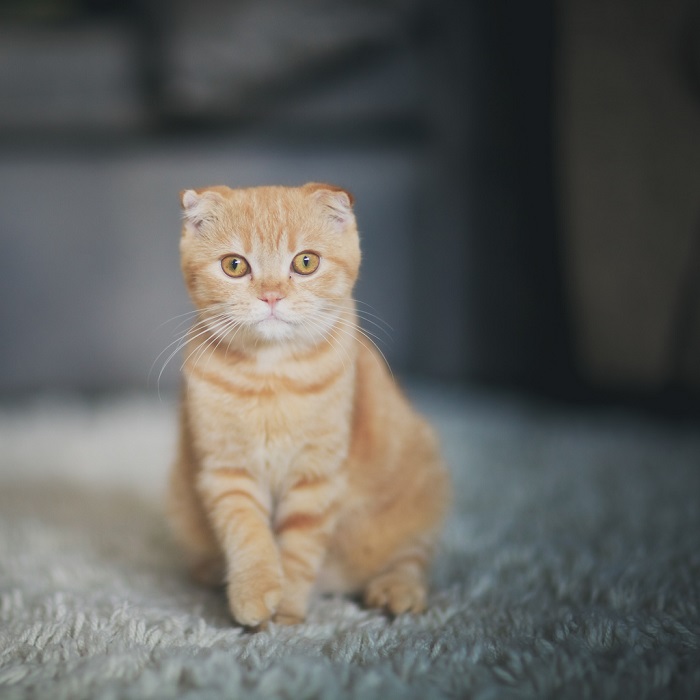
Watching Scottish Folds is pure pleasure and relaxation. When relaxing, Scottish Fold kittens take funny poses that not every yogi can repeat. The Scottish Fold cat is not hyperactive or overly mischievous. This is an intelligent breed that does not climb on cornices, but prefers to stay close to the warm side of its owner.

If you are going to buy a Scottish Fold, remember that this breed is susceptible to various diseases, including ticks and deafness. Genetically, lop-eared cats have many problems. This does not mean, of course, that all of them will manifest themselves in your pet. But forewarned is forearmed! The first thing a future owner of a Scottish Fold cat should know about is the skeletal anomalies typical of lop-eared cats. The same gene that determines lop-earedness is responsible for them, so this problem is common. Long-haired Scottish Fold cats require more attention to their fur, as their fur is prone to matting and forming two or three times a week. Their folded ears are prone to excessive earwax formation, so ear cleaning is a necessary procedure for both long-haired and short-haired Scottish Fold cats.
5. Sphinx. Price $1500
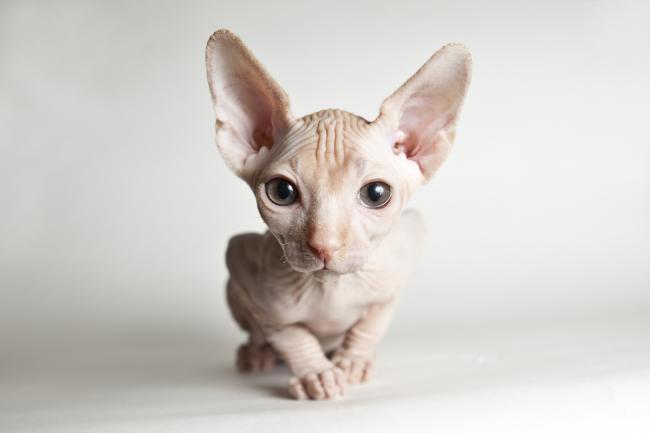
The Sphynx is another cat that made it onto the list of the most expensive cat breeds. Canadian Sphynxes seem to have stepped off the obelisks and tablets that we inherited from the Egyptian civilization. They are not like other cats at all. Sphynxes are exotic and mysterious, have incredible energy and a unique character. They are soft as suede and very warm to the touch, so hugging them in cold weather is a pleasure. Their wrinkled muzzles will remind you of the wisdom that comes with age, and huge ears and lemon-shaped eyes will give the cats a unique look. Their rounded bodies make you smile. The Sphynx is certainly an interesting mysterious cat breed for connoisseurs and admirers. The skin of the Sphynx is covered with thin hairs, like a peach.
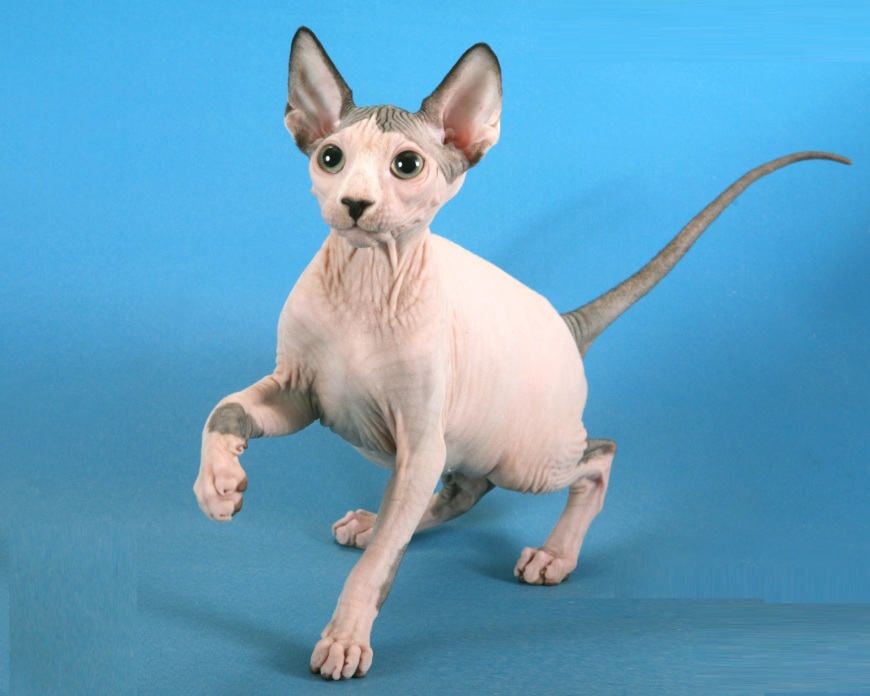
The breeding work on its creation began in 1966 in Canada, when an ordinary domestic cat Elizabeth, owned by Mrs. Micklewait from Ontario, gave birth to a kitten without hair. Actually, this was the result of a spontaneous mutation, and many still consider Sphynxes a mistake of nature. However, some breeders thought about creating a breed "addressed" to people suffering from allergies to wool. The cat was named Prune, and later crossed with his own mother, which resulted in the birth of hairless kittens. However, this line was interrupted in 1971. Breeding work resumed in 1975 in the USA, in Wadena, Minnesota, when a bald cat was born from an ordinary domestic shorthair cat, who was given the "speaking" name Epidermis. A year later, a hairless cat was born there. Both animals ended up in the same nursery, where they became the founders of the elite lines of the Sphynx breed. In 1978, hairless cats found in Canada were reintroduced, thus beginning the modern line.
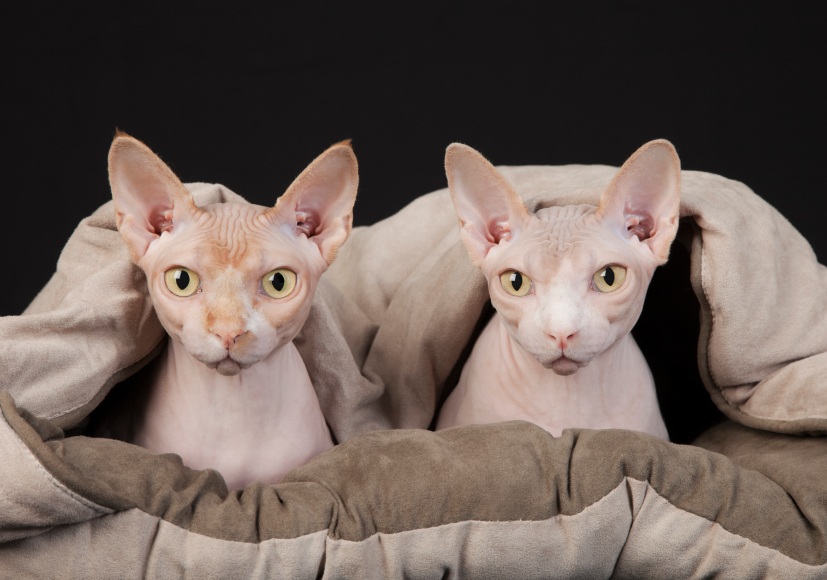
If you ever want to buy a Sphynx, don't be surprised that it is an extrovert. It is also known for its loyalty and affection for its owners. It is also a cat that is more like a dog. It greets its owner and even makes friends with other strangers. These wonderful cats do not experience any jealousy towards other pets and small children. They are friendly, affectionate and loyal. They often choose an "owner" for themselves and prefer to spend time with him in "conversations" and affection.
The Sphynx requires constant skin care, since this cat sweats through the skin. It is necessary to wipe the cat regularly, but you should not bathe it in a bathtub. A lot of sulfur forms in the ears, so they need to be cleaned regularly. You cannot leave the cat outside for a long time in direct sunlight, to avoid burns.
6. Russian Blue. Price $3000
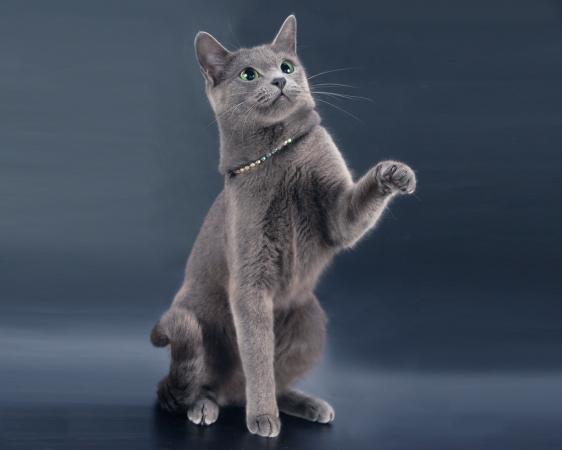
The Russian Blue cat is another breed that made it onto the list of most expensive cat breeds. It is known for its slate-blue-gray, thick coat.
As the name suggests, this cat originated in the Arkhangelsk region of Russia. These cats are also called the Arkhangelsk Blue. It is believed that the cat was brought from the Arkhangelsk Islands and Northern Europe in the 1860s. There are many legends about how English sailors carried these cats from Arkhangelsk to different ports of the world. The story of how the cat got to the northern port is based on two versions. The sailors noticed a beautiful cat in the vicinity of Arkhangelsk and took her on board. Thus, the breed began its journey around the world. According to the second version, the cats simply escaped from the English ship and settled in the northern port city.
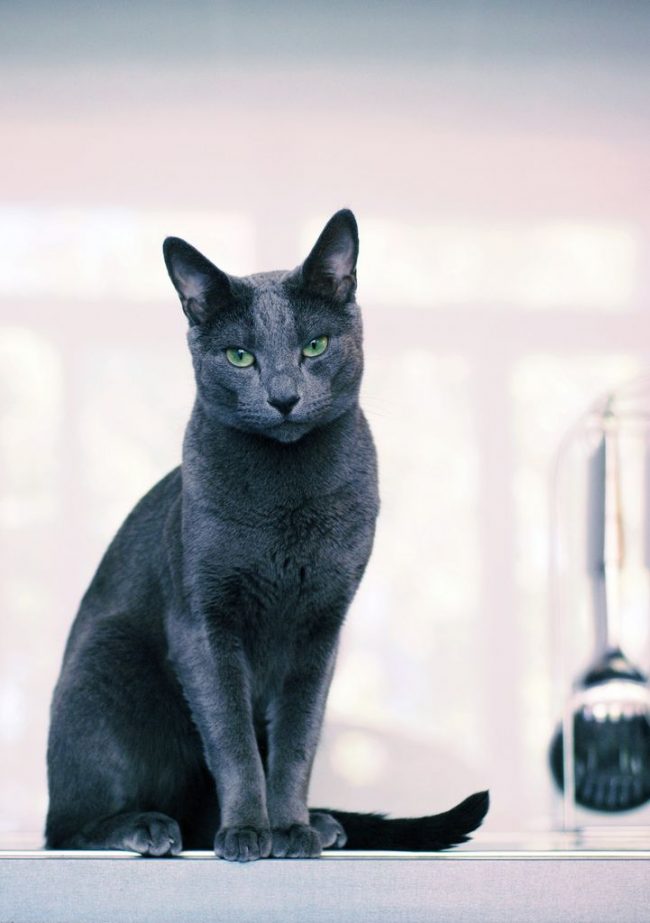
The Russian Blue cat is active and very friendly. These cats will not bother their owners, as they can find something to do without them. They are quite calm about loneliness, so they are ideal pets for those who work a lot outside the home. They are very curious, not a single detail of the interior will escape them, they will examine each of them, sniff them and, if possible, study them from the inside. Cats are very intelligent, having studied your gestures and facial expressions, they will learn to understand you from a “half-word”. The Russian Blue does not like “strangers”, preferring to sit somewhere until they leave.
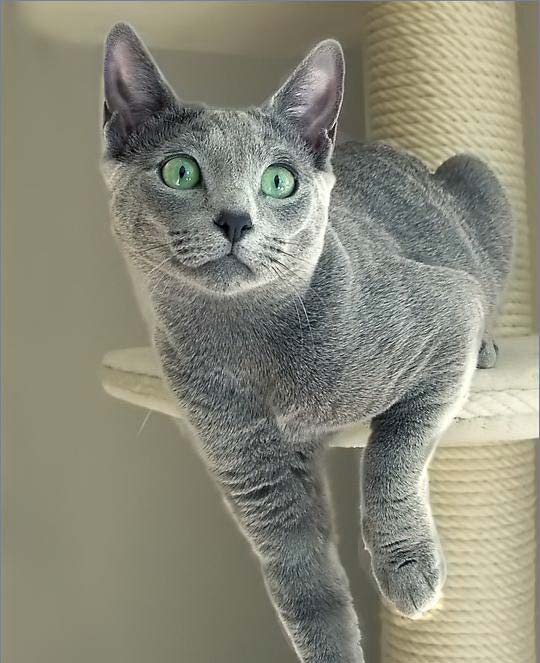
Cats of this breed are kind and obedient pets of their owner, but still can be stubborn. For strangers, the Russian Blue cat is shy and secretive, but not for acquaintances and relatives - with them it is friendly and open to communication. These cats love freedom, but give preference to their home, and not the street. Also, Russian Blues get along well with other animals in the house.
7. Peterbald. Price $1300
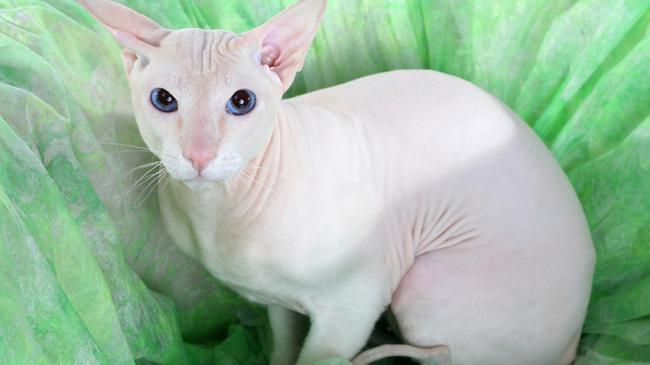
The Peterbald is another very expensive cat that you can buy if you have thousands of dollars in your pocket. It is known to have originated from Russia and resembles the Oriental Shorthair.
The selection work on the new breed was started in 1994 by the St. Petersburg breeder Olga Smirnova. By crossing the Don Sphynx with the Oriental cat, she got the first four kittens that inherited the exterior of the Orientals and the naked vulnerability of the Don Sphynx. In 1996, after additional selection, the young Peterbald breed was registered, named after the city of Peter the Great. There are different types of cats of this breed that you are likely to encounter. Some have straight hair, while others are born bald. One of the most unique features of the Peterbald is that they have a gene for hair loss.
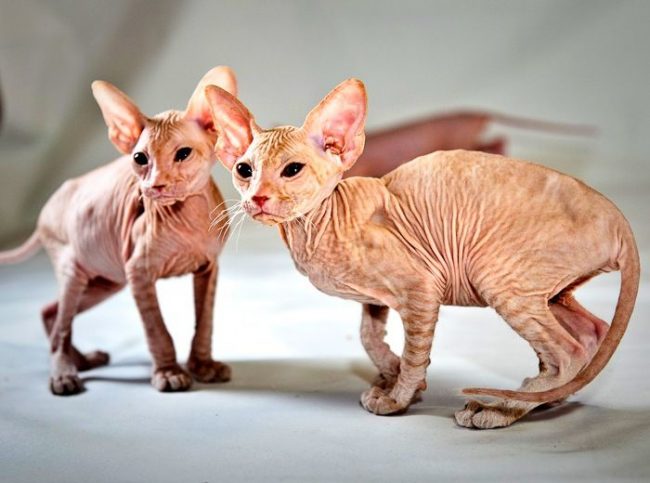
The Petersburg Sphynx is unusually affectionate and does not show aggression towards humans or other animals, it is easy to train. These cats are energetic, affectionate, and friendly. They are very trusting, cannot be alone, the Peterbald craves constant communication with you. The Peterbald needs to be near you, look at you, sleep next to you, pressing his whole body against you, in a word, the cat needs affection and love.
8. Hypoallergenic cat allerka. Price $10 000
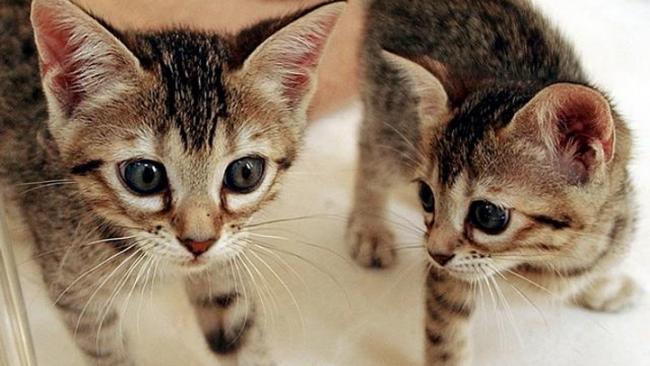
One of the main problems that people face when it comes to cats is allergies. Yes, there are cases when pet owners have to give up their furry pets just because of allergies. One of the most common solutions is to desensitize yourself from the allergen. However, in the case of a hypoallergenic cat, Allerka, this will not happen. You could enjoy becoming a cat owner despite your allergic reaction to cats.
Yes, it is an absurd price, but it is a breakthrough that cat lovers are willing to pay for. Cats of this species are very friendly, playful and gentle, and also get along very well with small children, are very obedient and are very trainable. The main color is black spots on a golden background.
Unfortunately, it was never possible to check whether Allerka is really hypoallergenic or not. Moreover, none of the potential owners of the miracle kitten, even those who had already paid money for it, were able to see their pet. The Allerka company was headed by the notorious Simon Brody, a swindler who made a lot of money on the problems of allergy sufferers and their desire to have a cat. Numerous lawsuits brought against Brody make one doubt the existence of a new breed of hypoallergenic cats. And if we recall his scam with the non-existent Ashera breed, for which Brody passed off Savannah cats, then doubt turns into certainty - alas, a hypoallergenic breed has not yet been bred ... Despite the scandal, the Allerka company website is still working, promoting both non-existent breeds. The site even contains some documents stating that Allerka cats allegedly have modified DNA, in which the gene responsible for the secretion of the very protein that causes allergies is missing.
Whether to believe this information or not is up to everyone who wants to buy an “exclusive kitten”.
9. Bengal cat. Price $1450
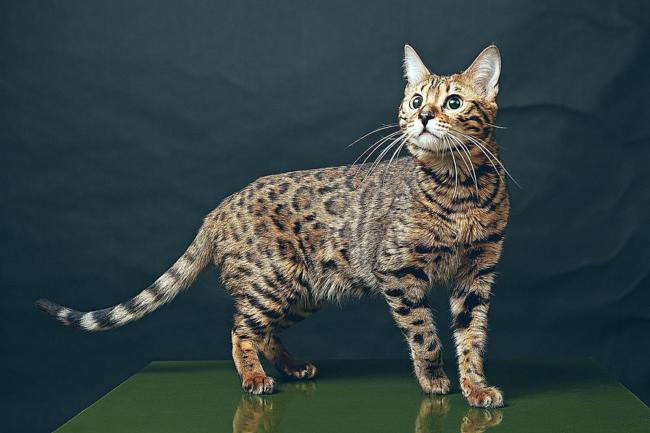
The Bengal cat is a domestic cat that is one of the most expensive cat breeds. It was bred to look like a wild cat. When considering its appearance, it looks like an ocelot or a leopard. However, this is not surprising, since it was crossed with Asian leopard cats. The Bengal's unique feature, of course, is its fur. Most people, when they hear about the Bengal cat, imagine it as a spotted animal. In fact, these cats can also have a marbled coloring. Moreover, marbled should be understood as a coloring in the form of horizontal markings, differing in their shades.
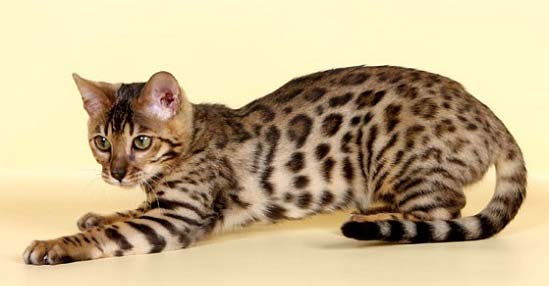
If you are a little afraid that the Bengal cat has the character of a wild cat, then this is not true. It was crossed with domestic cats to have the appearance of a wild cat, but the temperament of a domestic cat. These cats are incredibly loyal, ready to accompany their owner everywhere: on the couch, in bed, in the kitchen, in the bathroom ... They, like a dog, will follow their owner everywhere, running at his heels.
The Bengal cat breed was created purely by chance. Asian leopard cats were crossed with domestic cats primarily to study the breed's immunity to feline leukemia. Among the diseases specific to Bengals, we note hypertrophic cardiomyopathy. This disease most often affects young cats that have been castrated. In addition, Bengal kittens can suffer from feline leukemia and food poisoning, because they have very sensitive stomachs.
10. Asherah. Price $25,000

Ashera is the most exotic domestic cat in the world. A rare breed of domestic cats, which reaches a meter in height and weighs 15 kilograms, was artificially bred by the English biotech company Lifestyle Pets. This breed is the largest of domestic cats. You will have to wait in line to buy an Ashera, since no more than 100 individuals are born per year.
These cats can be taken outside on a leash and are said to be friendly with children. However, it is best to cover the cats with heated blankets during the winter months, as their areas of origin have hot climates. The Ashera cat is a fearsome predator at first glance. But behind the animal grin, powerful body and wild coloring, there is a typical domestic pet with the habits of an ordinary cat.
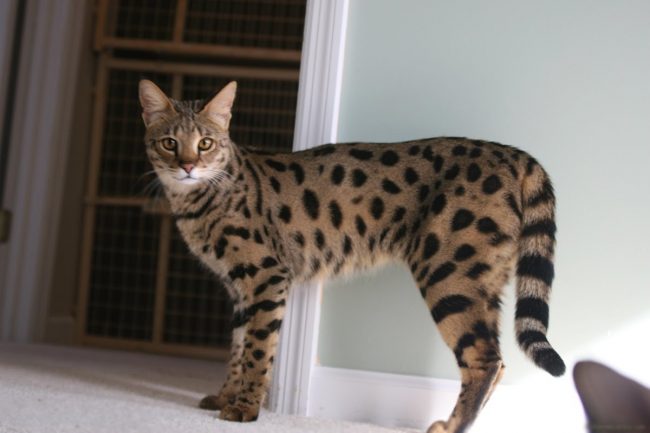
She loves to sleep, enjoys playing with children and purrs affectionately when she is near her owner. The Ashera cat breed was intended for wealthy owners with appropriate living conditions. She is not just a pet - such a pet always reminds guests of the financial situation of its owner. A miniature copy of a cheetah becomes an exclusive decoration of a luxurious house and a large metropolitan apartment.
Ashera cat breeders reluctantly admit the weakness of its digestive system. To prevent digestive system surprises from becoming an unpleasant decoration of an expensive carpet, Ashera needs to be fed well and healthy!








